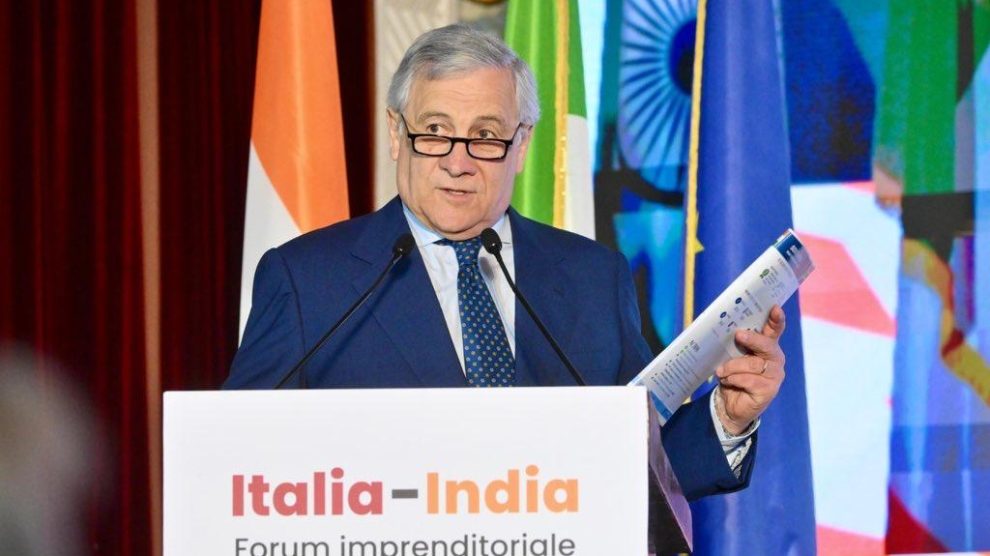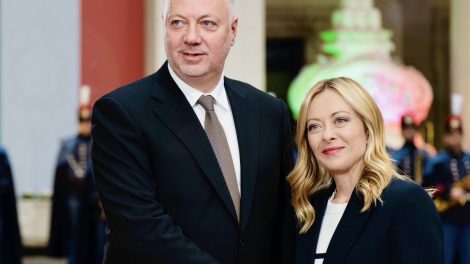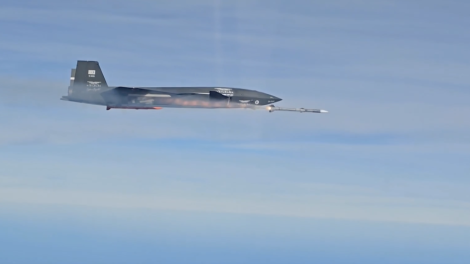Decoding the news. Italian Foreign Minister Antonio Tajani is in New Delhi this week for a high-level Italy-India Business Forum and bilateral talks to deepen trade and strategic ties.
- At the centre of the visit is Rome’s effort to position itself as a key European partner for India within the EU and along the India-Middle East-Europe Economic Corridor (IMEC), which Tajani dubbed the “Cotton Route.”
What he’s saying. “India and Italy are closer than ever,” Tajani said, calling IMEC a “strategic opportunity for growth and trade.”
- He announced the appointment of Ambassador Francesco Talò as Italy’s Special Envoy for the Cotton Route, underscoring Rome’s intention to play a central role in the Corridor.
- Italy is offering the port of Trieste as a logistical hub and promoting digital infrastructure, such as the Blue Raman undersea cable linking Mumbai and Genoa, avoiding passing through Egypt.
The EU matters. Tajani also underlined the importance of the EU-India Free Trade Agreement (FTA), saying: “We hope the FTA will be signed soon. Trade between Italy and India exceeds €14 billion, but I want to do more. We count on the benefits this deal will bring to our companies.”
- He added that more than 800 Italian firms already operate in India and expressed Italy’s intention to support them and attract new, innovative Indian companies to invest in Italy.
Is a momentum coming? Tajani’s visit coincides with a crucial push by India and the European Union to conclude a long-stalled FTA by the end of 2025 (hopefully) or at least in 2026.
- Brussels sees the deal as a strategic hedge against global economic fragmentation and rising protectionism — and Italy wants to be at the heart of it.
By the numbers. During a February visit to India, European Commission President Ursula von der Leyen called the FTA “the largest deal of this kind anywhere in the world”.
- The EU is India’s largest trading partner, with €124 billion in goods trade and nearly €60 billion in services in 2023 — a third of which were digital.
- India, in turn, is the EU’s 9th largest trade partner and a key geopolitical actor in the Indo-Pacific.
Between the lines. The FTA remains politically and technically challenging.
- The EU wants lower Indian tariffs on cars, alcohol and medical equipment.
- India wants better access for its pharmaceuticals, textiles and skilled workers.
- Disputes over EU environmental rules and farm subsidies remain unresolved.
The SIMEST paradigm. Italy’s SIMEST is shaping a concrete model for economic cooperation with India.
- With the opening of its first office in New Delhi, a new export and internationalisation scheme in the works, and a trilateral MoU with CDP and Invest India, SIMEST offers a pragmatic framework to support Italian businesses and deepen bilateral ties – aligned with broader EU-India connectivity goals.
Expert’s take. Retired ambassador Anil Trigunayat, a diplomat who has served in key roles across India’s Economic, West Asia and North Africa divisions, framed Tajani’s visit as part of a broader diplomatic momentum aimed at consolidating the strategic partnership between Rome and New Delhi in a time of global flux.
- As he put it with Decode39, “The world is going through an unprecedented churn where India and Italy intend to play a constructive role for mutual benefit and in the larger global interest.”
- According to Trigunayat, progress on strategic security, economic and connectivity initiatives – including IMEC – will be high on the agenda.
What we’re watching. Tajani said a political meeting of all IMEC countries is planned for the second half of 2025.
- That could offer Italy a diplomatic platform to amplify its role in EU-India connectivity and trade.
- Italy sees the EU-India FTA not just as a trade deal but as a geopolitical tool, and it’s now moving to secure its place at the centre of the partnership.





